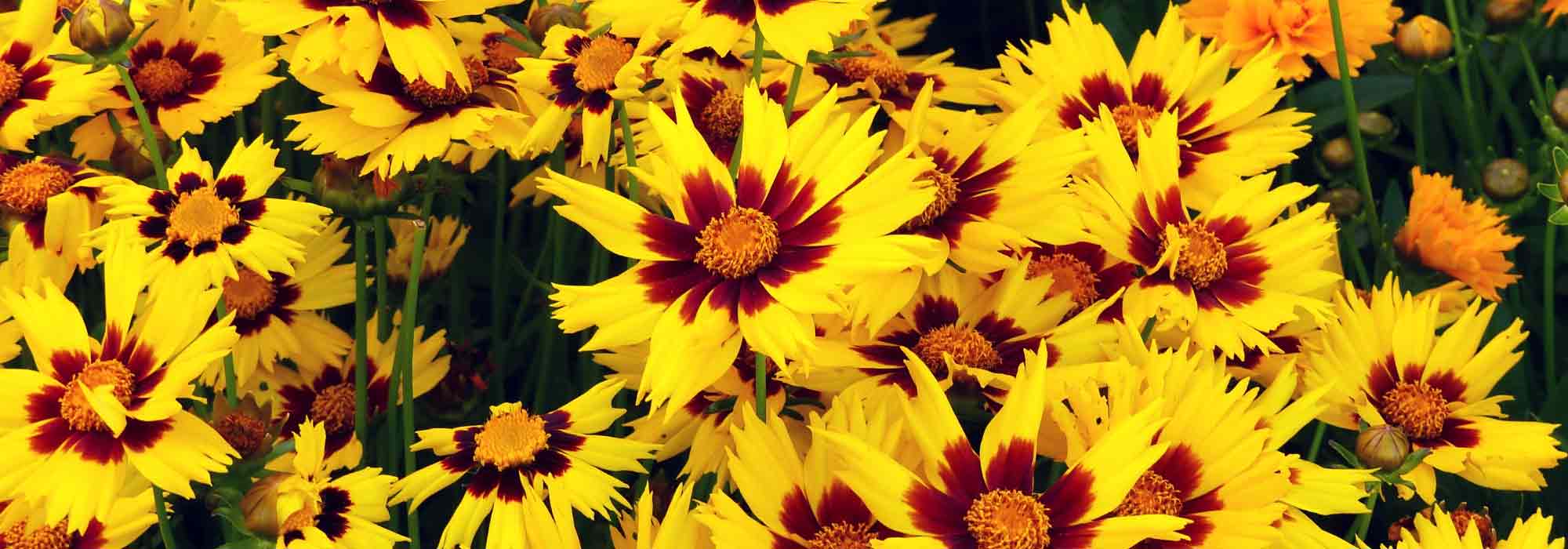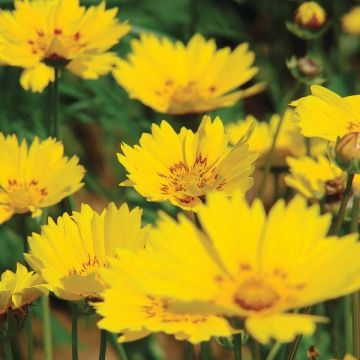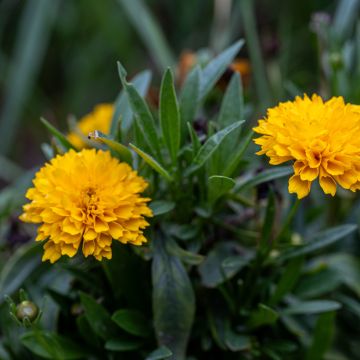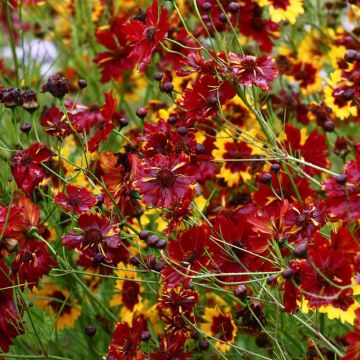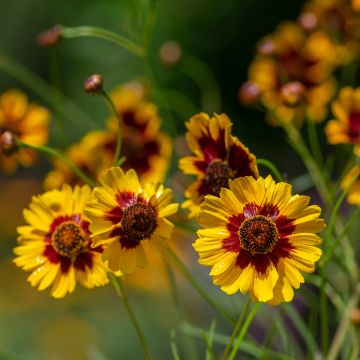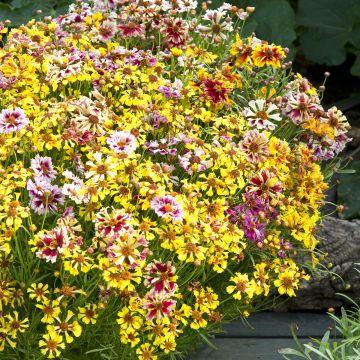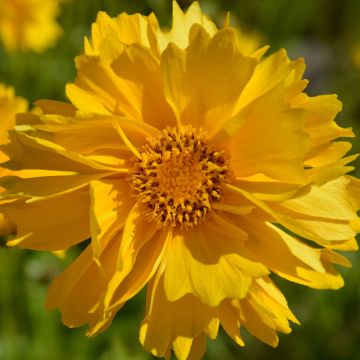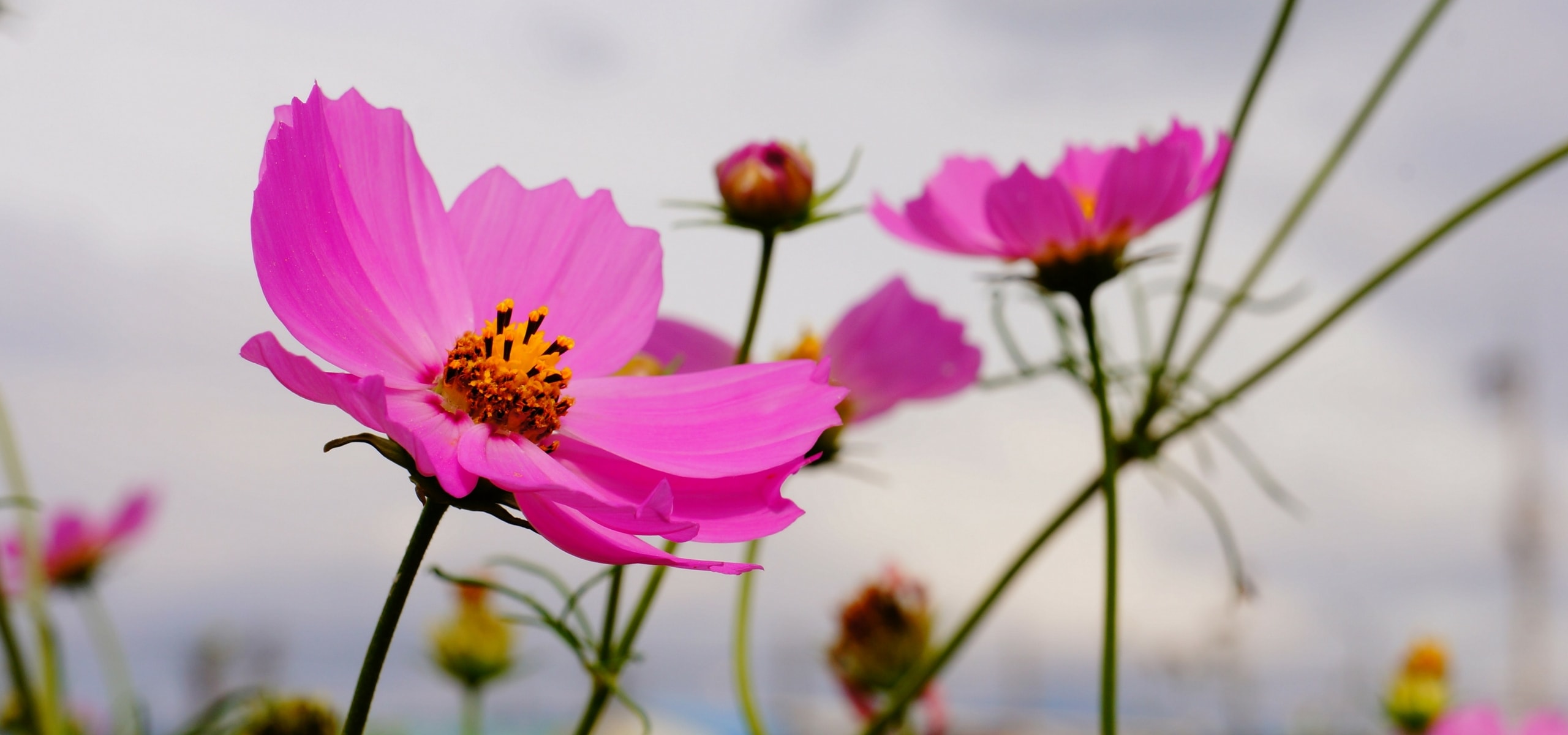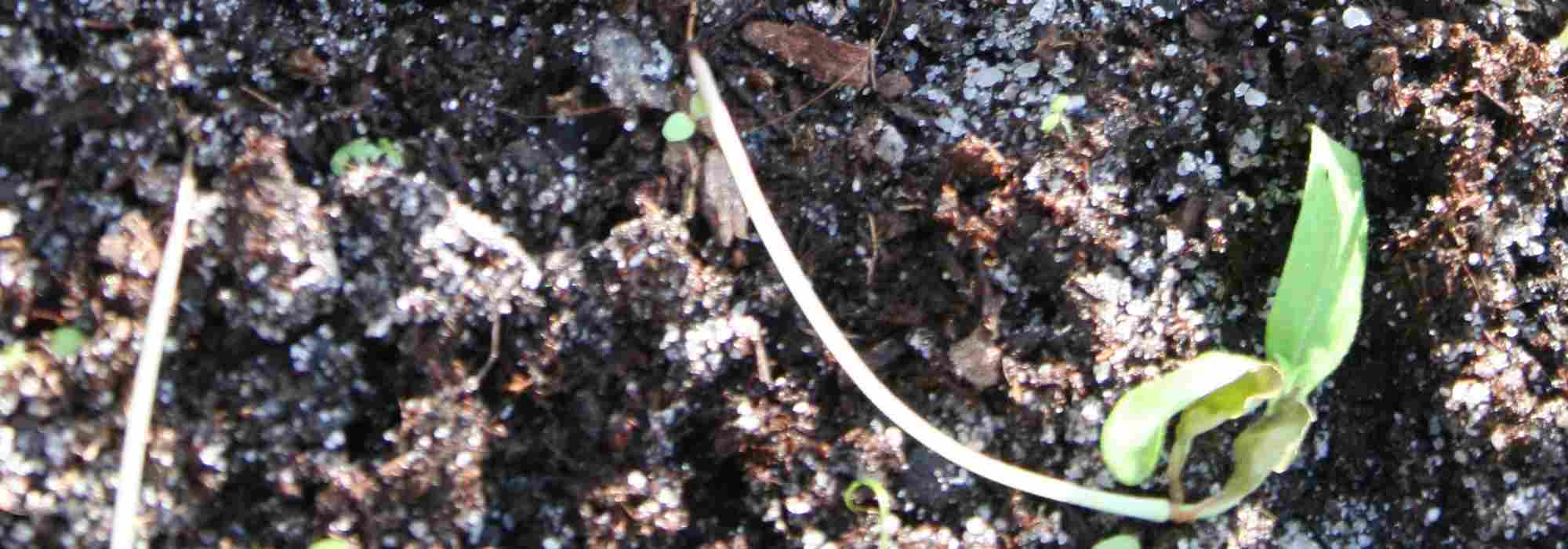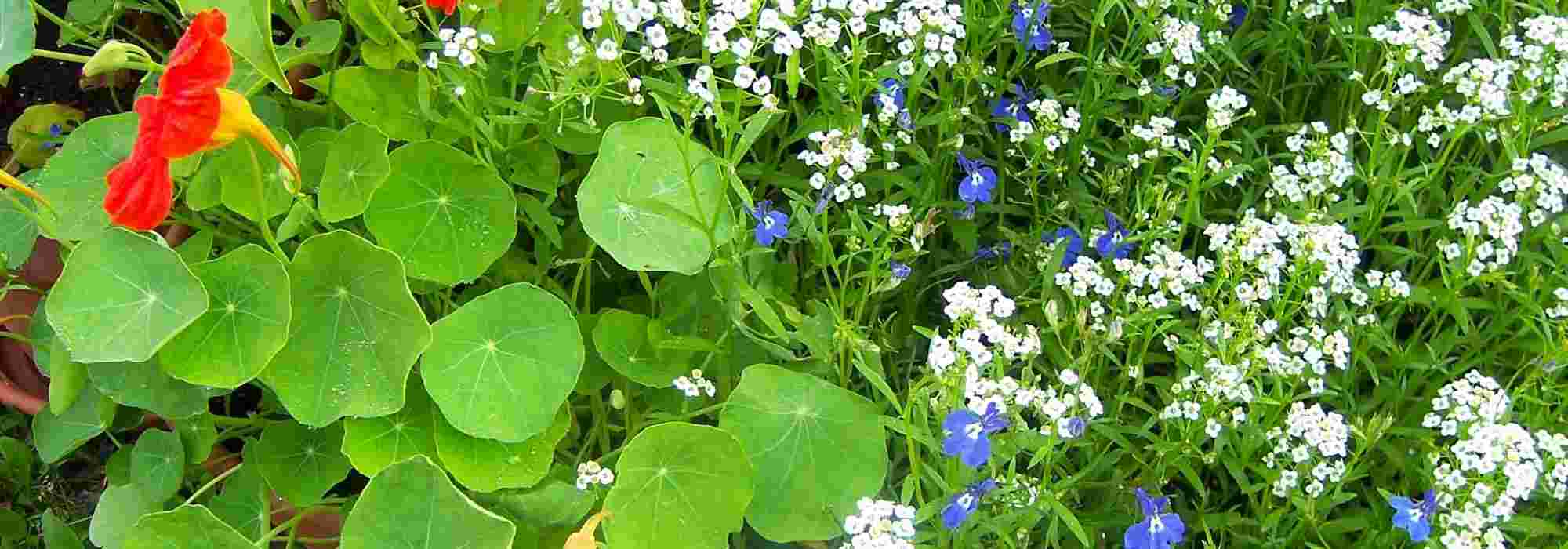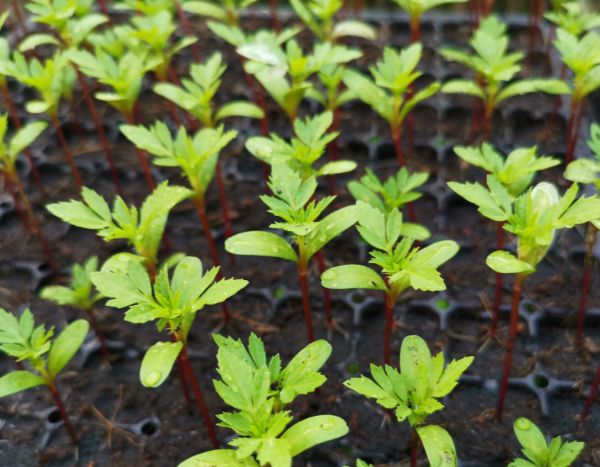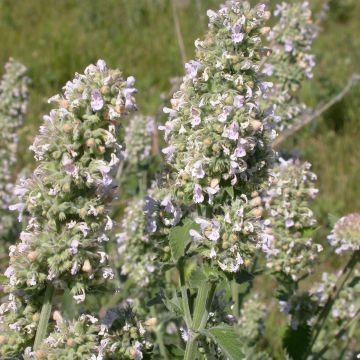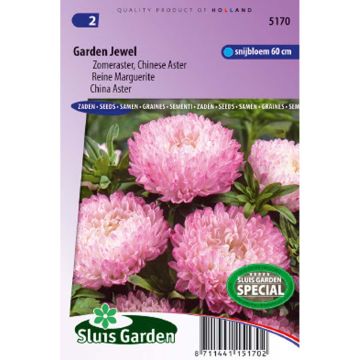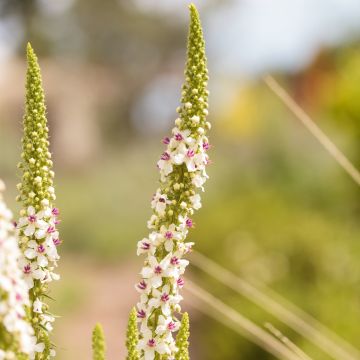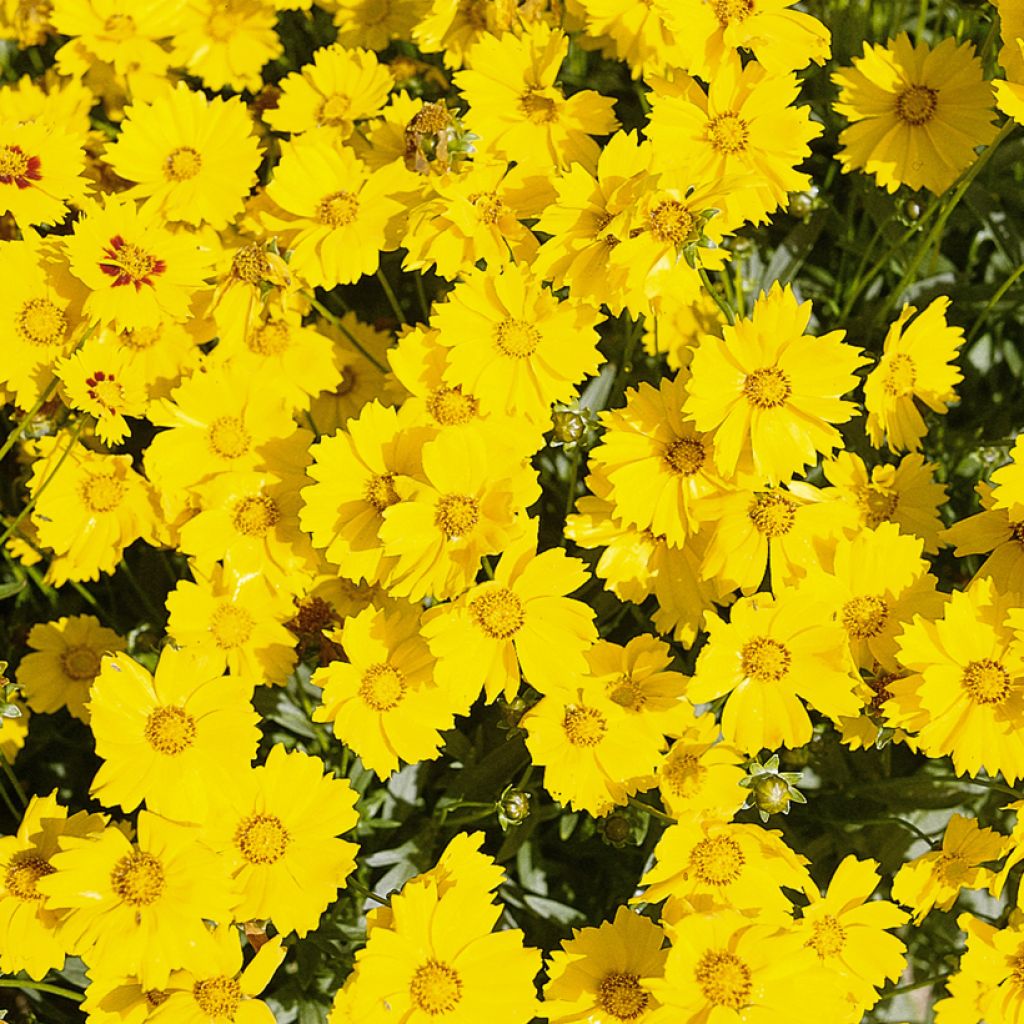

Coreopsis grandiflora Mayfield Giant seeds
Coreopsis grandiflora Mayfield Giant seeds
Coreopsis grandiflora Mayfield Giants
Large-flowered Tickseed, Golden Tickseed
Special offer!
Receive a €20 voucher for any order over €90 (excluding delivery costs, credit notes, and plastic-free options)!
1- Add your favorite plants to your cart.
2- Once you have reached €90, confirm your order (you can even choose the delivery date!).
3- As soon as your order is shipped, you will receive an email containing your voucher code, valid for 3 months (90 days).
Your voucher is unique and can only be used once, for any order with a minimum value of €20, excluding delivery costs.
Can be combined with other current offers, non-divisible and non-refundable.
Home or relay delivery (depending on size and destination)
Schedule delivery date,
and select date in basket
This plant carries a 6 months recovery warranty
More information
We guarantee the quality of our plants for a full growing cycle, and will replace at our expense any plant that fails to recover under normal climatic and planting conditions.
Does this plant fit my garden?
Set up your Plantfit profile →
Description
Coreopsis grandiflora 'Mayfield Giant' is a perennial plant belonging to the group of Coreopsis grandiflora which gathers medium to tall varieties (45 to 90 cm). This variety produces large sun-yellow flowers with fringed petals, carried by thin, erect, leafless stems almost continuously from June to October, ideal for cutting. Requiring little maintenance, it brightens up flower beds and borders, or pots on the terrace or balcony.
Coreopsis grandiflora belongs to the Asteraceae family. It originates from North America, from California, and from New Mexico to the Great Lakes. 'Mayfield Giant' is a rhizomatous perennial plant that forms a basal, rounded clump, 70 to 80 cm tall when in flower and 40 to 50 cm wide. Flowering occurs from June to October. The 7.5 cm diameter, solitary heads are borne on slightly hairy stems. The beautiful intense green foliage is deciduous. The opposite, lanceolate, entire leaves, sometimes incised at the base, almost sessile (without petiole), measure 10 cm long. This perennial spreads quite rapidly through rhizomes.
The 'Mayfield Giant' coreopsis dislikes winter moisture and heavy soils. This plant requires full sun to flower well. It likes light and moist soil, always well-drained, slightly acidic, neutral or slightly calcareous. In such conditions, these plants flower and live long. To promote reblooming, regularly remove faded flowers. This operation will also extend the plant's lifespan.
Coreopsis grandiflora 'Mayfield Giant' is a versatile perennial, ideal both in a rockery, on a slope alongside wallflowers, love-in-a-mist and wild flax, and in a herbaceous border with Teucrium chamaedrys, thyme and cotton lavenders. Perfect for greening a slightly wild area, this plant also adapts very well to cultivation in pots or containers, offering continuous flowering from the first year. In the ground or in a large pot, it requires little water and pairs wonderfully with Calamintha and Nepeta 'Dawn to dusk' for a flowery summer. Its bright flowers add a vibrant touch to summer bouquets.
The ecological benefit:
By sowing Coreopsis in your garden, you will attract pollinating insects and other beneficial insects, lured by the scent of their nectar-filled flowers. This will improve the health of your garden ecosystem, contributing notably to the production of numerous fruits and vegetables. So, plant a few specimens near your vegetable garden.
Flowering
Foliage
Plant habit
Botanical data
Coreopsis
grandiflora
Mayfield Giants
Asteraceae
Large-flowered Tickseed, Golden Tickseed
Coreopsis grandiflora Mayfield Riesen
Cultivar or hybrid
Other Coreopsis seeds
View all →Planting and care
Sow the Perennial Coreopsis 'Mayfield Giant' in February-March in a seed tray. Use a good quality soil, possibly enriched with compost. Sow your seeds by broadcasting them. Cover the seeds with a sprinkling of soil or vermiculite, lightly press down and water generously with a fine rose. Place your pots in the light, without direct sunlight, at a temperature of 20 to 25°C.
The seeds will germinate in 21 to 30 days. Once the plants have reached a height of 10cm, transplant them into pots. 15 days before their final placement, start gradually acclimatisingng them to a temperature of 15°C.
By late May to early June, the temperature in the garden will be warm enough to plant out your young plants. Choose a sunny location. Add a good shovelful of compost to each planting hole.
It is possible to sow Coreopsis directly in the garden, but you will have to wait until the risk of frost is no longer a concern, around mid-May.
By removing faded flowers, you will promote their renewal and longevity.
Sowing period
Intended location
Planting & care advice
This item has not been reviewed yet - be the first to leave a review about it.
Similar products
Haven't found what you were looking for?
Hardiness is the lowest winter temperature a plant can endure without suffering serious damage or even dying. However, hardiness is affected by location (a sheltered area, such as a patio), protection (winter cover) and soil type (hardiness is improved by well-drained soil).

Photo Sharing Terms & Conditions
In order to encourage gardeners to interact and share their experiences, Promesse de fleurs offers various media enabling content to be uploaded onto its Site - in particular via the ‘Photo sharing’ module.
The User agrees to refrain from:
- Posting any content that is illegal, prejudicial, insulting, racist, inciteful to hatred, revisionist, contrary to public decency, that infringes on privacy or on the privacy rights of third parties, in particular the publicity rights of persons and goods, intellectual property rights, or the right to privacy.
- Submitting content on behalf of a third party;
- Impersonate the identity of a third party and/or publish any personal information about a third party;
In general, the User undertakes to refrain from any unethical behaviour.
All Content (in particular text, comments, files, images, photos, videos, creative works, etc.), which may be subject to property or intellectual property rights, image or other private rights, shall remain the property of the User, subject to the limited rights granted by the terms of the licence granted by Promesse de fleurs as stated below. Users are at liberty to publish or not to publish such Content on the Site, notably via the ‘Photo Sharing’ facility, and accept that this Content shall be made public and freely accessible, notably on the Internet.
Users further acknowledge, undertake to have ,and guarantee that they hold all necessary rights and permissions to publish such material on the Site, in particular with regard to the legislation in force pertaining to any privacy, property, intellectual property, image, or contractual rights, or rights of any other nature. By publishing such Content on the Site, Users acknowledge accepting full liability as publishers of the Content within the meaning of the law, and grant Promesse de fleurs, free of charge, an inclusive, worldwide licence for the said Content for the entire duration of its publication, including all reproduction, representation, up/downloading, displaying, performing, transmission, and storage rights.
Users also grant permission for their name to be linked to the Content and accept that this link may not always be made available.
By engaging in posting material, Users consent to their Content becoming automatically accessible on the Internet, in particular on other sites and/or blogs and/or web pages of the Promesse de fleurs site, including in particular social pages and the Promesse de fleurs catalogue.
Users may secure the removal of entrusted content free of charge by issuing a simple request via our contact form.
The flowering period indicated on our website applies to countries and regions located in USDA zone 8 (France, the United Kingdom, Ireland, the Netherlands, etc.)
It will vary according to where you live:
- In zones 9 to 10 (Italy, Spain, Greece, etc.), flowering will occur about 2 to 4 weeks earlier.
- In zones 6 to 7 (Germany, Poland, Slovenia, and lower mountainous regions), flowering will be delayed by 2 to 3 weeks.
- In zone 5 (Central Europe, Scandinavia), blooming will be delayed by 3 to 5 weeks.
In temperate climates, pruning of spring-flowering shrubs (forsythia, spireas, etc.) should be done just after flowering.
Pruning of summer-flowering shrubs (Indian Lilac, Perovskia, etc.) can be done in winter or spring.
In cold regions as well as with frost-sensitive plants, avoid pruning too early when severe frosts may still occur.
The planting period indicated on our website applies to countries and regions located in USDA zone 8 (France, United Kingdom, Ireland, Netherlands).
It will vary according to where you live:
- In Mediterranean zones (Marseille, Madrid, Milan, etc.), autumn and winter are the best planting periods.
- In continental zones (Strasbourg, Munich, Vienna, etc.), delay planting by 2 to 3 weeks in spring and bring it forward by 2 to 4 weeks in autumn.
- In mountainous regions (the Alps, Pyrenees, Carpathians, etc.), it is best to plant in late spring (May-June) or late summer (August-September).
The harvesting period indicated on our website applies to countries and regions in USDA zone 8 (France, England, Ireland, the Netherlands).
In colder areas (Scandinavia, Poland, Austria...) fruit and vegetable harvests are likely to be delayed by 3-4 weeks.
In warmer areas (Italy, Spain, Greece, etc.), harvesting will probably take place earlier, depending on weather conditions.
The sowing periods indicated on our website apply to countries and regions within USDA Zone 8 (France, UK, Ireland, Netherlands).
In colder areas (Scandinavia, Poland, Austria...), delay any outdoor sowing by 3-4 weeks, or sow under glass.
In warmer climes (Italy, Spain, Greece, etc.), bring outdoor sowing forward by a few weeks.






























